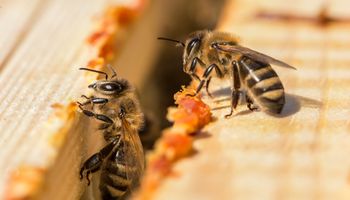Premature birth:
A child is called premature if he or she is born before the completed 37th week of pregnancy. Medical advances have made it possible to keep children alive and treat them from a birth weight of 500 grams, which is equivalent to about 24 completed weeks of pregnancy.
The so-called kangaroo method or kangaroo mother care is the continuous, direct skin contact of the newborn with the naked breast of the mother or father. This involves the baby sensing their warmth, heartbeat, breathing and smell for several hours a day while lying covered with a warm cloth. In addition, the child is fed exclusively by breastfeeding with the mother's milk. This sensory perception by parents is one of the most effective measures to prevent mortality in low birth weight infants. The method was originally targeted in economically weaker countries in the late 1970s to compensate for the lack of availability of incubators to care for premature infants. After some time, this method was also "rediscovered" in certain industrialized countries - however, in these countries, this method is only used after the baby is stabilized.
The WHO advises the introduction of shorter, intermittent kangaroo sessions once the premature infant's condition has stabilised and continuous kangaroo care once the infant is fully stabilised. In practice, this delays the start of the kangaroo method by a few days.
Cochrane review:
A Cochrane review (i.e., global independent network of scientists and health professional researchers) published in 2016 concluded that if preterm infants were cared for using the mother's kangaroo method after stabilization, the mortality rate for low birth weight infants was reduced by 40%. This involved comparing 1736 infants in 8 studies with conventional hospital care.
In the review, the newborns who were cared for with kangaroo maternal care also had lower infection rates, more exclusive breastfeeding, and favorable weight gain. The mean age of newborns ranged from 10 hours to 24.5 days, with approximately 45% of neonatal deaths occurring within the first 24 hours and 80% within the first week of life. This meant that the majority of mortality cases occurred before the actual start of the kangaroo method.
In recent years, WHO has investigated in Ghana, India, Malawi, Nigeria and Tanzania whether kangaroo mother care can reduce mortality in preterm births even without prior stabilization. All clinics in these countries had access to incubators for preterm infants. The WHO Department of South East Asia Region aims to reduce the neonatal mortality rate to 12 per 1000 live births by 2030 as part of the Sustainable Development Goals (i.e. Sustainable Development Goals).
Study Method:
All live-born infants in this randomized, multicenter, nonblinded, controlled trial had a birth weight between 1 and less than 1.8 kg regardless of maternal age, delivery method, or twin status.
Exclusion criteria were:
- Maternal age less than 15 years.
- No consent for the study
- Triplets or more
- Maternal illness with no ability to complete kangaroo mother care within the first three days
- Not enrolled in the study within the first 2 hours of delivery
- Residence of the mother outside the study area
- Newborns who could not breathe spontaneously within the first hour or showed severe congenital malformation
A total of 3211 infants from 2944 mothers were enrolled and randomly assigned to the study during the period from November 2017 to January 2020. This included 1609 infants from 1470 mothers in the intervention group and 1602 infants from 1474 mothers in the control group. The average length of skin-to-skin contact between mother and infant in the 6.4-day neonatal intensive care units was 16.9 hours in the intervention group and 1.5 hours in the control group.
Study Results:
In the first 28 days, neonatal mortality was 191 (12.0%) in the intervention group and 249 (15.7%) in the control group. According to the researchers, the relative risk of death of 0.75 was significant. Accordingly, immediate kangaroo mother care reduced the risk of death by 25%. The number of deaths within the first 3 days after the birth of the child also decreased from 5.8% to 4.6%. Accordingly, the researchers state that 1 out of 27 premature infants were saved by this kangaroo method.
The researchers suggest that this reduction in risk in the countries may be related to a possible shaping of the microbiome through skin-to-skin contact. The absence of intensive medical therapies could also reduce the risk of infection there. Other possible factors, according to the study, would be: early protection induced by breast milk and avoidance of hypothermia.
Conclusion:
In infants weighing between 1 and 1.8 kg at birth, kangaroo mother care without early stabilization could lead to a significant risk reduction in neonatal mortality rate, according to the study. This study is particularly significant in the economically weaker countries, where there are several instances of lack of availability of incubators for the care of preterm infants. Researchers in this study also state that the immediate kangaroo method saved the lives of one out of 27 newborns after birth.






